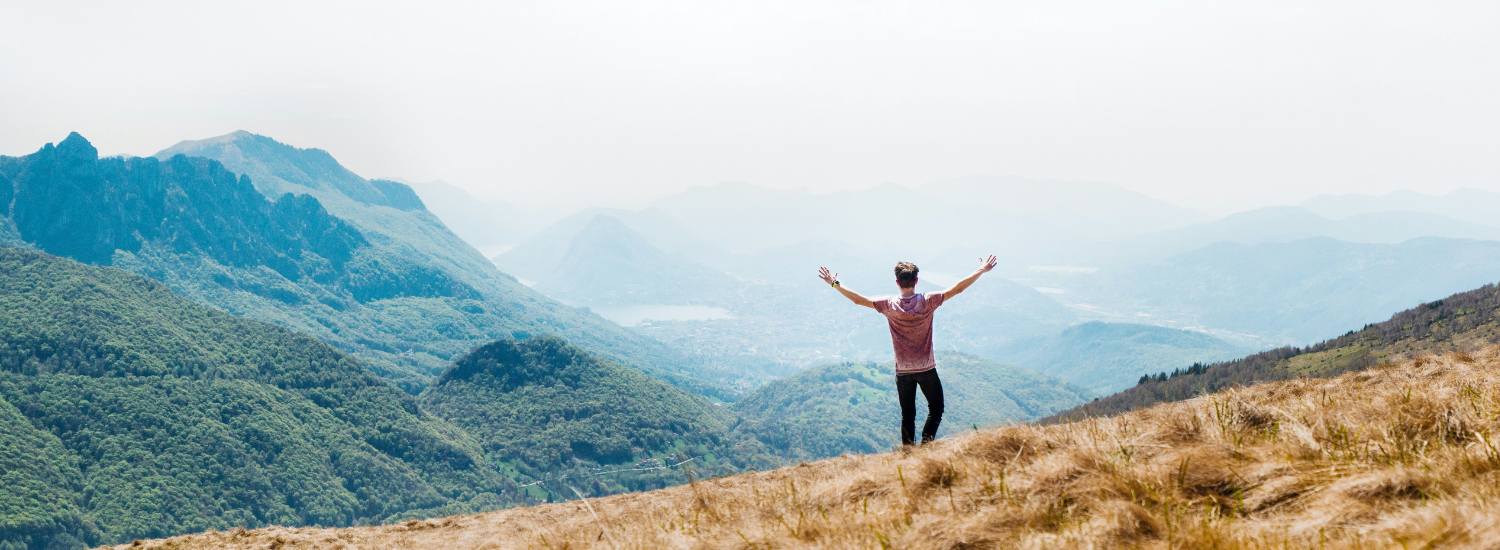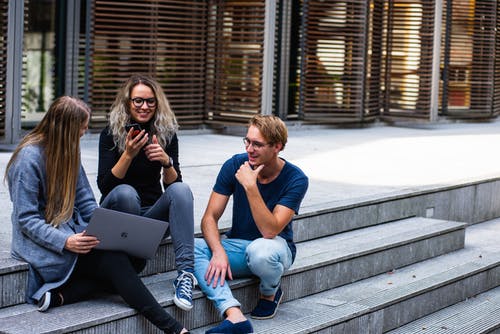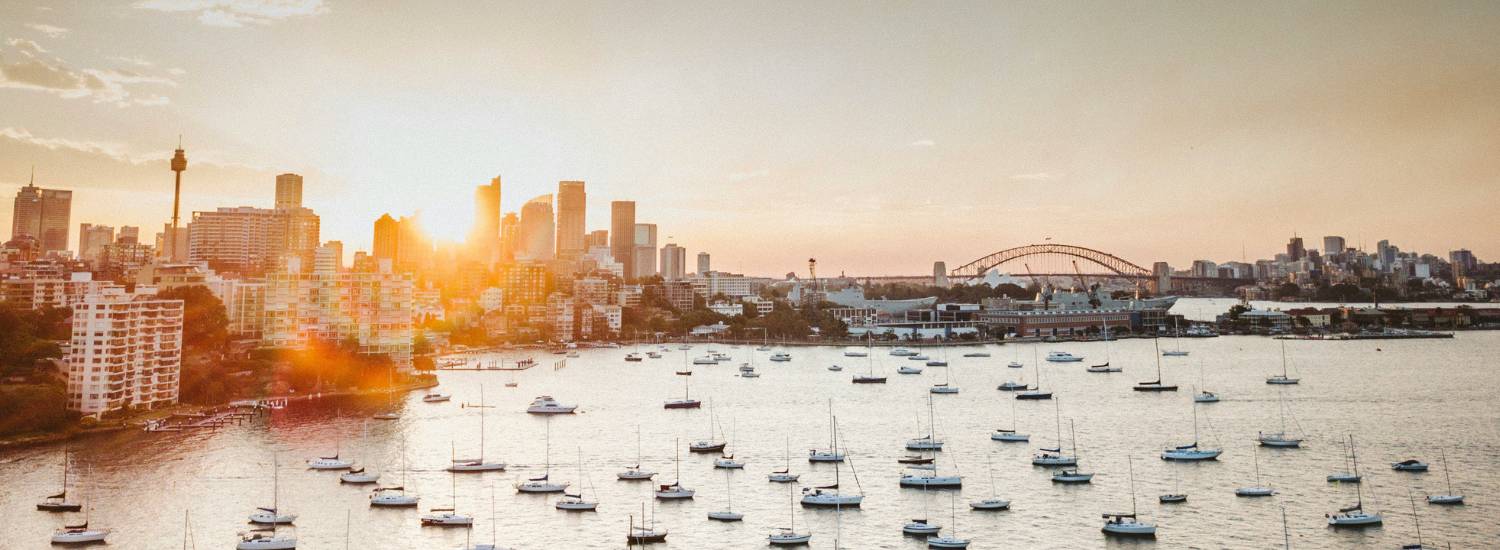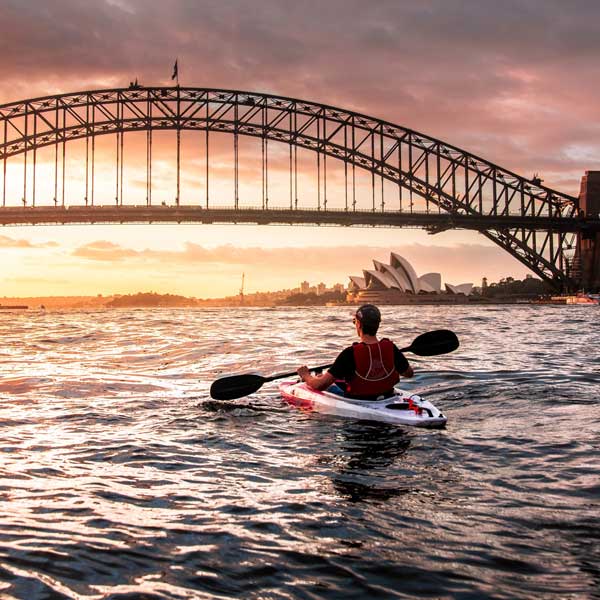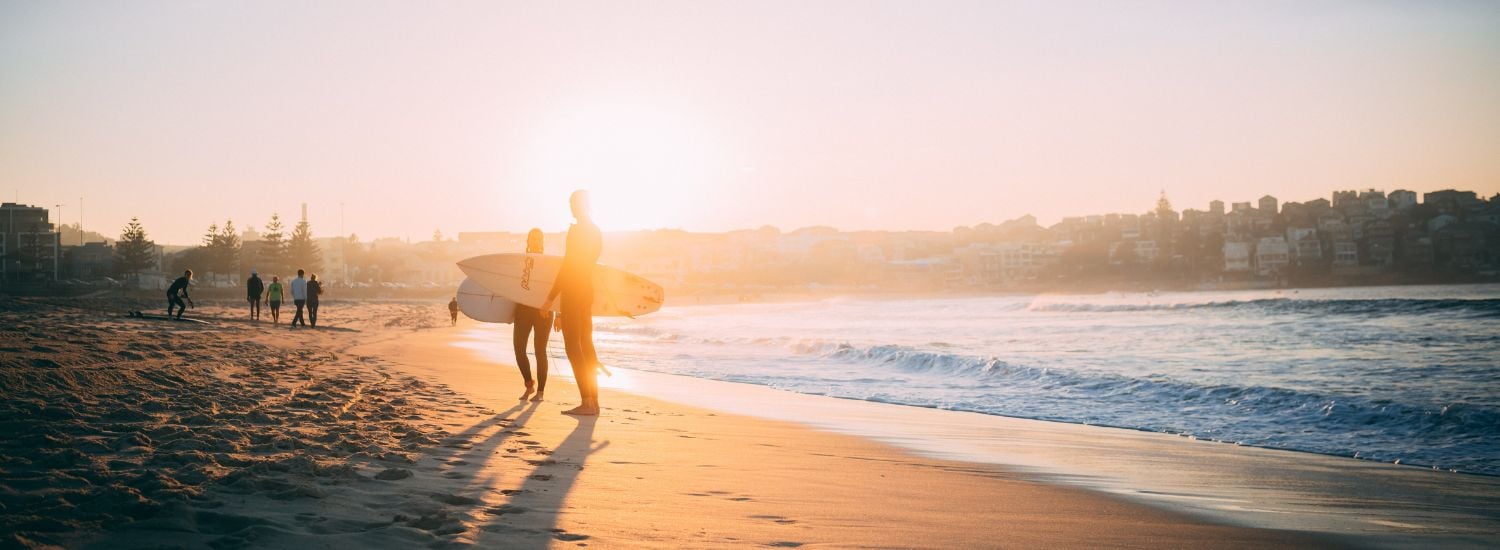Before packing, check this list of items prohibited from entering a particular country or region.
Key takeaways
- To apply for an Australian visa, decide which one is most applicable, go to the Australian Immigration and Citizenship website, create an ImmiAccount and complete the step-by-step online process.
- Australia's entry requirements include providing a valid passport, visa, character assessment and health declaration, and ensuring you have no outstanding immigration debts.
- An Australian visa costs as little as zero dollars for the eVisitor subclass 651 to as much as AU$14,670 (US$9,544/£7,041) for the Significant Investor stream subclass 188.
- To get an Australian visa takes between 1 day and 2 years.
If you're applying for a skilled visa, your work experience must be on the Skilled Occupation List, and you must submit an Expression of Interest (EOI).
How to apply for an Australian visa
To apply for an Australian visa, first decide which visa is most applicable to you and your family's needs. Common visas and visa types for those moving to Australia include:
- eVisitor (subclass 651): for passport holders from certain European countries, including the UK.
- Visitor visa (subclass 600): including tourist stream visas, sponsored family stream visas, and business visitor stream visas.
- Skills in Demand visa (subclass 482): for skilled positions that an Australian cannot fill. It includes the core skills stream visa and labour agreement stream visa.
- Skilled Independent visa (subclass 189): a points-tested permanent visa for invited skilled workers not sponsored by an employer, family member, or state/territory government.
- Student visa (subclass 500): for those enrolled in a course of study in Australia.
- Employer Nomination Scheme visa (subclass 186): allows skilled workers nominated by their employer to live and work in Australia.
Once you've selected an Australian visa, you can see its application costs, conditions, and processing time. Plus, an eligibility breakdown, which includes age requirements, health status, and level of English.
Next, under the "Step by Step" section, select "apply". The website will then take you to an ImmiAccount registration page so you can start your application journey. ImmiAccount registration involves providing your personal details, creating a username and password, and verifying your email address.
Some visas may ask for medical checks or police certificates. If you're applying for a skilled visa, your work experience must be on the Skilled Occupation List, and you must submit an Expression of Interest (EOI).
For complex applications, consider asking a registered migration agent for help. They can guide you through the entire application process, handle the paperwork, and, if necessary, help you appeal the decision.
Once registered, you can manage and track your application, upload supporting documents, and receive updates.

Australia entry requirements
The entry requirements to visit or move to Australia depend on your personal circumstances and visa type. Before applying, read the full eligibility requirements for your specific visa to avoid misunderstandings or disappointment. When entering the country, follow all instructions from the Australian Border Force and respect customs rules. Check official sources before you travel, as rules may change with little notice due to security or health updates.
Most individuals who are not Australian or New Zealand citizens must meet the following core conditions to enter Australia:
- Valid passport: a passport or other acceptable travel document.
- A visa before entry: a valid visa or authority to enter Australia.
- Character requirements: assessed as having good character under Australian migration law, including declaring any criminal history.
- Basic health requirements: a health declaration, including in-person examinations for certain visa types.
- No outstanding immigration debts: you must not owe money to the Australian government due to previous dealings with the immigration system, or have made arrangements to repay it.
Depending on your visa type, border officials may ask to see your travel plans, including proof of flights, funds, and health insurance. You must also declare if you're carrying over AU$10,000 (US$6,433/£4,877)* in cash and might have to show evidence of ties to your home country, such as employment, family, or property ownership.
If your visa is part of the biometrics program or you're travelling from a specific country, you may need to provide biometrics (fingerprints and a facial photograph) at a nominated location. The Australian government bans certain food, plants, and animal products to protect its people and the environment, so check before packing.
*costs accurate as of 2025
Do you need a visa for Australia?
You do need a visa for Australia unless you're a New Zealand citizen, in which case you can apply for a Special Category visa (subclass 444) on arrival, which grants an indefinite stay. Australia offers over 120 visas, including tourist, working holiday, student, and skilled worker visas.
Border officials will not let you in without proof of a valid visa, even if you're only transiting through the country. Before travelling, refer to the Australian Government's immigration and citizenship website to confirm which visa you need.
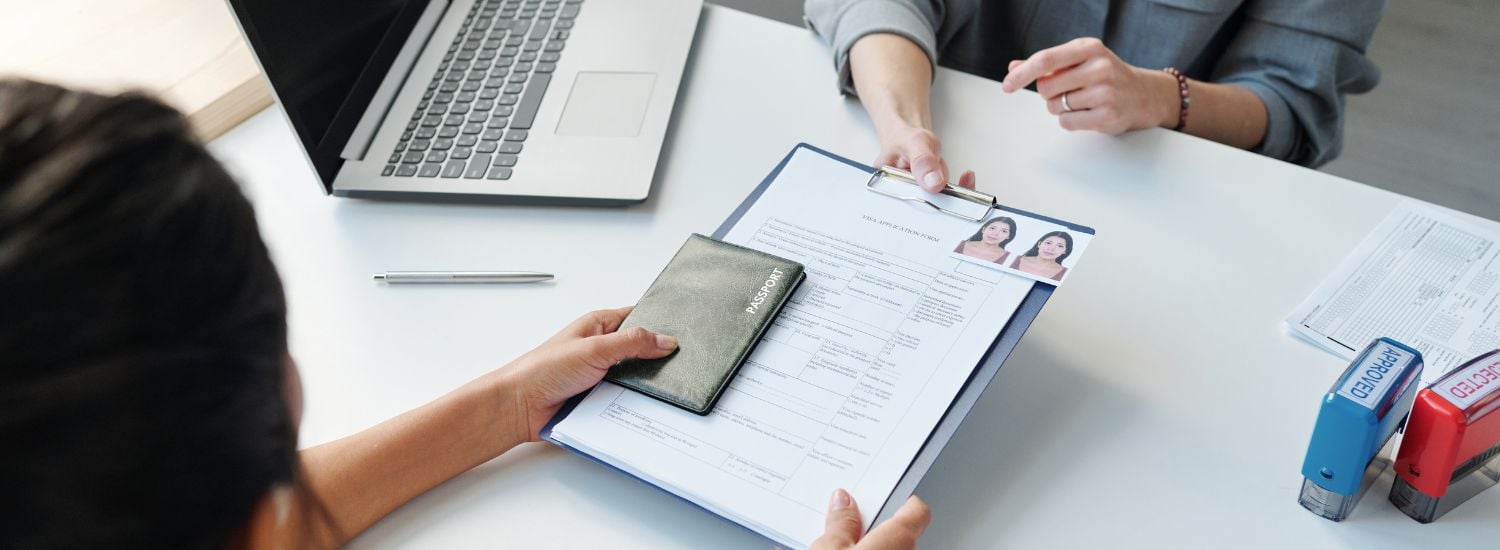
How much does an Australian visa cost?*
An Australian visa can cost as little as zero dollars for the eVisitor subclass 651 to as much as AU$14,670 (US$9,544/£7,041) for the Significant Investor stream subclass 188. You pay the fee online during the application, before processing begins, but note that the Australian government does not offer refunds, even if they refuse your application. Check the Department of Home Affairs website for the latest costs, as fees can change without notice.
Below are some of the most common Australian visas and their base application cost*:
![]()
Additional Australian visa costs
Depending on the visa, you may also need to pay fees for the following:
- Additional applicants.
- Paper-based applications.
- Assurance of support — a commitment by an Australian resident or employer via a repayable bond to financially support a visa applicant so they do not rely on government income support.
- Review of decisions.
- Medical exams from approved panel doctors.
- Biometrics collection.
- Translations and certifications— non-English documents must be professionally translated and certified.
- English language tests — such as IELTS or PTE.
- Police records check — from Australian police and your home country's police.
You pay the fee online during the application, before processing begins, but note that the Australian government does not offer refunds, even if they refuse your application.
![]()
Visitor visas
- eVisitor (subclass 651): AU$0
- Tourist stream (apply outside Australia) (subclass 600): AU$200 (US$130/£96)
- First Working Holiday visa (subclass 417): AU$670 (US$436/£322)
![]()
Family visas
- Aged Dependent Relative visa (subclass 114): AU$5,280 (US$3,436/£2,534)
- Child visa (subclass 101): AU$3,235 (US$2,105/£1,553)
- Parent visa (subclass 103): AU$7,345 (US$4,781/£3,525)
- Prospective Marriage visa (subclass 103): AU$9,365 (US$6,097/£4,498)
![]()
Employer visas
- Employer Nomination Scheme visa (subclass 186): AU$4,045 (US$2,633/£1,943)
- Regional Sponsored Migration Scheme visa (subclass 187): AU$4,115 (US$2,679/£1,977)
- Skilled Nominated visa (subclass 190): AU$4,910 (US$3,196/£2,358)
![]()
Skilled worker visas
- Global Talent visa (subclass 858): AU$4,985 (US$3,245/£2,394)
- Skilled Independent visa (subclass 189): AU$4,115 (US$2,678/£1,976)
![]()
Student visas
- Student visa (subclass 500): AU$2,000 (US$1,302/£961)
- Student Guardian visa (subclass 590): AU$2,000 (US$1,302/£961)
- Training visa (subclass 407): AU$430 (US$280/£207)
*estimated fees accurate as of 2025
If your application is missing information or flagged for extra checks, it'll slow things down.

How long does it take to get a visa for Australia?
It takes between 1 day and 2 years to get a visa for Australia. However, times vary depending on your visa type, personal circumstances, the accuracy and completeness of your application, application volumes, and current embassy staffing levels. If your application is missing information or flagged for extra checks, it'll slow things down. Health exams or police certificates may also delay approval.
Processing times for all visa and citizenship applications are updated monthly and posted on the Department of Home Affairs website. However, they only provide a rough guide, not an exact timeframe.
The following list of popular visas shows how long you can expect to hear back once you've submitted your application*:
- Visitor visa (subclass 600): 90% processed within 23 days
- eVisitor visa (subclass 651): 90% processed within 1 day
- Skilled independent points-tested worker visa (subclass 189): 90% processed within 9 months
- Skilled nominated worker visa (subclass 190): 90% processed within 18 months
- Temporary skill shortage nominated worker visa (subclass 482): 90% processed within 8 months
- Temporary short stay worker visa (subclass 400): 90% processed within 23 days
- Working holiday visa (subclass 417): 90% processed within 81 days
- Partner visa (subclass 100): 90% processed within 18 months
- Prospective marriage visa (subclass 300): 90% processed within 27 months
- Dependent child visa (subclass 445): 90% processed within 24 months
- Student higher education sector visa (subclass 500): 90% processed within 4 months
*estimated times accurate as of 2025


